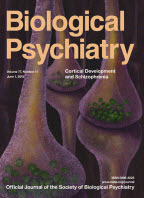Identifying Early
- Early Signs
- Screening
- Eye Gaze Research
- Eye Gaze Patterns as Biomarkers
Results of a study published on April 11, 2015 in Biological Psychiatry by Karen Pierce and colleagues contained 444 subjects sampled from the general population and is the largest eye tracking study of ASD to date. The study explores the question of eye gaze patterns as a valid biomarker of ASD and concludes that yes, eye tracking can identify a meaningful subgroup on the spectrum.
Data also shows that an individual toddler's eye tracking profile can have prognostic value in that those with heightened visual attention towards dynamic geometric images tended to be more severely symptomatic. This has implications regarding how we approach the diagnosis of ASD and potentially what treatments we prescribe. Specificity and positive predictive value of the "GeoPref Test" were considerably high (98% and 90% respectively), making it a very strong biomarker finding.
The study does more than identify a robust biomarker of ASD — for the first time, it opens the possibility that the early identification of ASD can move beyond purely clinical observation techniques and into more objective, biologically based approaches.

